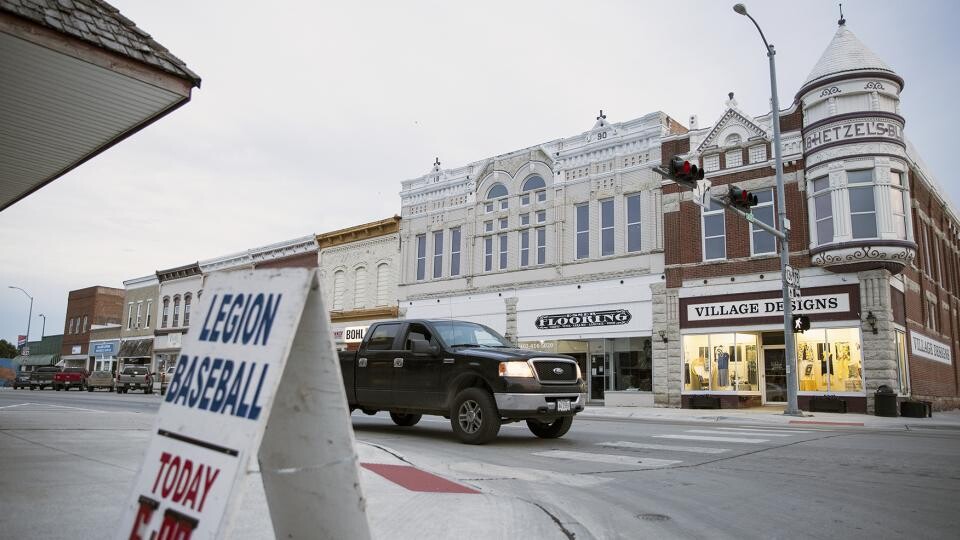
Rural Nebraskans gave positive ratings to their communities, while optimism about the expected change in their community has increased over the past five years, the 2015 Nebraska Rural Poll shows.
Over the past 20 years, more rural Nebraskans have generally believed their town or city has changed for the better during the past year compared with those who believed it changed for the worse. This has been especially true in the past four years, when the gap between these two opinions widened.
A similar trend is reflected in a question about how they believe their community will be in 10 years. The proportion believing it will be better has steadily increased in the past five years, from 20 percent in 2011 to 26 percent this year. The proportion believing it will be worse place has declined from 24 percent in 2011 to 18 percent this year.
“Optimism is important for the success of both individuals and communities,” said Randy Cantrell, rural sociologist with the Nebraska Rural Futures Institute. “Those who believe that things are getting better and will continue to do so are more likely to invest the time and resources needed to actually make things better.”
Also:
Most rated their community as friendly (76 percent), trusting (64 percent) and supportive (67 percent).
Fifty-five percent said it would be difficult to leave their community, while 30 percent said it would be easy.
Sixty-one percent disagreed that their community is powerless to control its future.
Community size played a role in respondents’ views. Residents of larger towns were more likely to say it has changed for the better during the past year and will be a better place to live 10 years from now. Forty-three percent of those living in or near cities with populations of 10,000 or more said their community has changed for the better during the past year, compared with 20 percent who live in or near towns with fewer than 500 people. Similarly, 37 percent living in or near the largest communities believed their town or city will be a better place to live 10 years from now, compared with 13 percent of those living in or near the smallest towns.
Residents of larger towns were also more likely than those in smaller ones to disagree that their community is powerless to control its own future. Sixty-four percent living in or near towns of 1,000 or more people disagreed that their community is powerless to control its future, compared with 53 percent living in or near towns of 500 to 999 people. Twenty-three percent of those living in or near the smallest towns agreed that it is powerless to control its own future.
However, residents of smaller towns were more likely to say it would be difficult to leave. “People living in larger communities had more favorable views of both recent changes and the outlook for the future,” said Cheryl Burkhart-Kriesel, associate professor and Nebraska Extension community vitality specialist. “They also report relatively higher levels of satisfaction with what typically is a greater variety of services and resources found in larger places. However, people living in smaller communities are more likely to report strong, local social and economic bonds, making leaving difficult.”
The Nebraska Rural Poll also found:
Except for a few services that are largely unavailable in rural areas, respondents were generally satisfied with basic community services and amenities.
However, the proportion of rural Nebraskans satisfied with many social services and entertainment services has decreased across all nineteen years of the study. Declines in satisfaction levels across all 19 years are seen with nursing home care, medical care services, senior centers, mental health services, entertainment, retail shopping and restaurants.
Only 7 percent said they were planning to move from their community in the next year. Ten percent were uncertain and 84 percent had no plans to move. Of those who were planning to move, 53 percent planned to leave Nebraska. Less than one-half planned to remain in the state, with 13 percent planning to move to the Lincoln or Omaha areas and 34 percent planning to move to another part of the state.
The Nebraska Rural Poll is the largest annual poll of rural Nebraskans’ perceptions on quality of life and policy issues. Complete results can be found here. UNL’s Department of Agricultural Economics conducts the poll in cooperation with the Nebraska Rural Futures Institute with funding from Nebraska Extension and the Agricultural Research Division in the Institute of Agriculture and Natural Resources.







